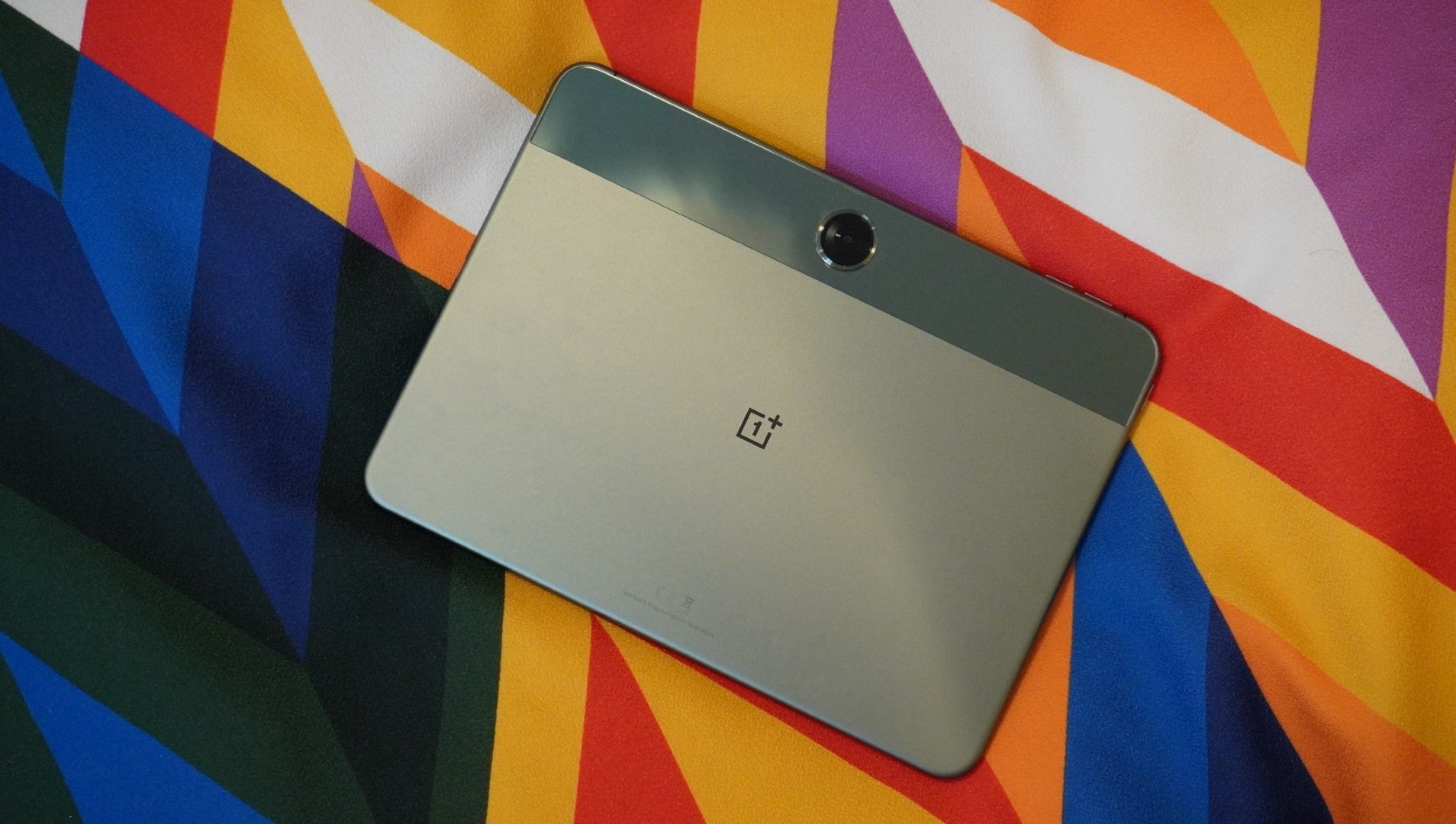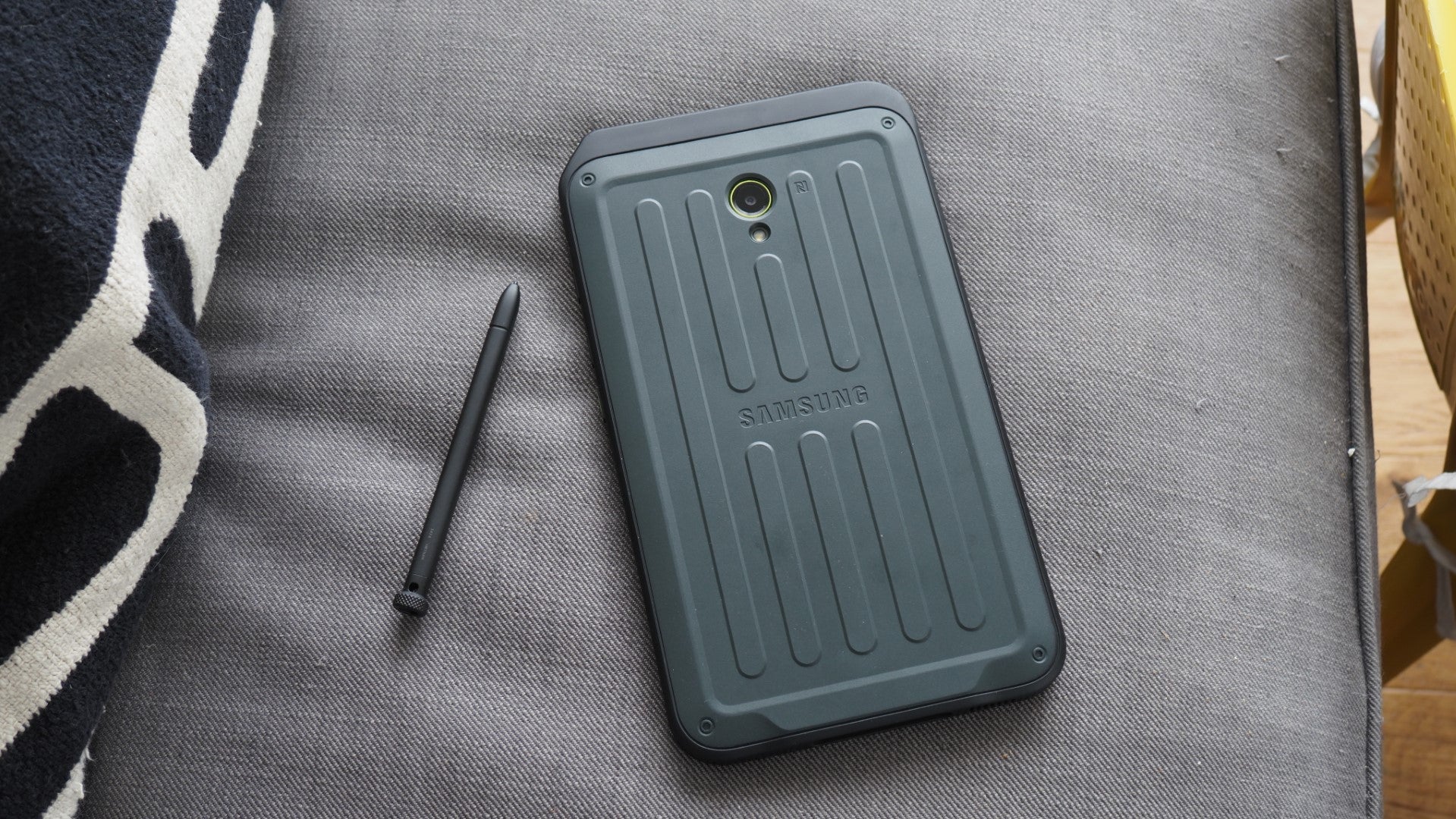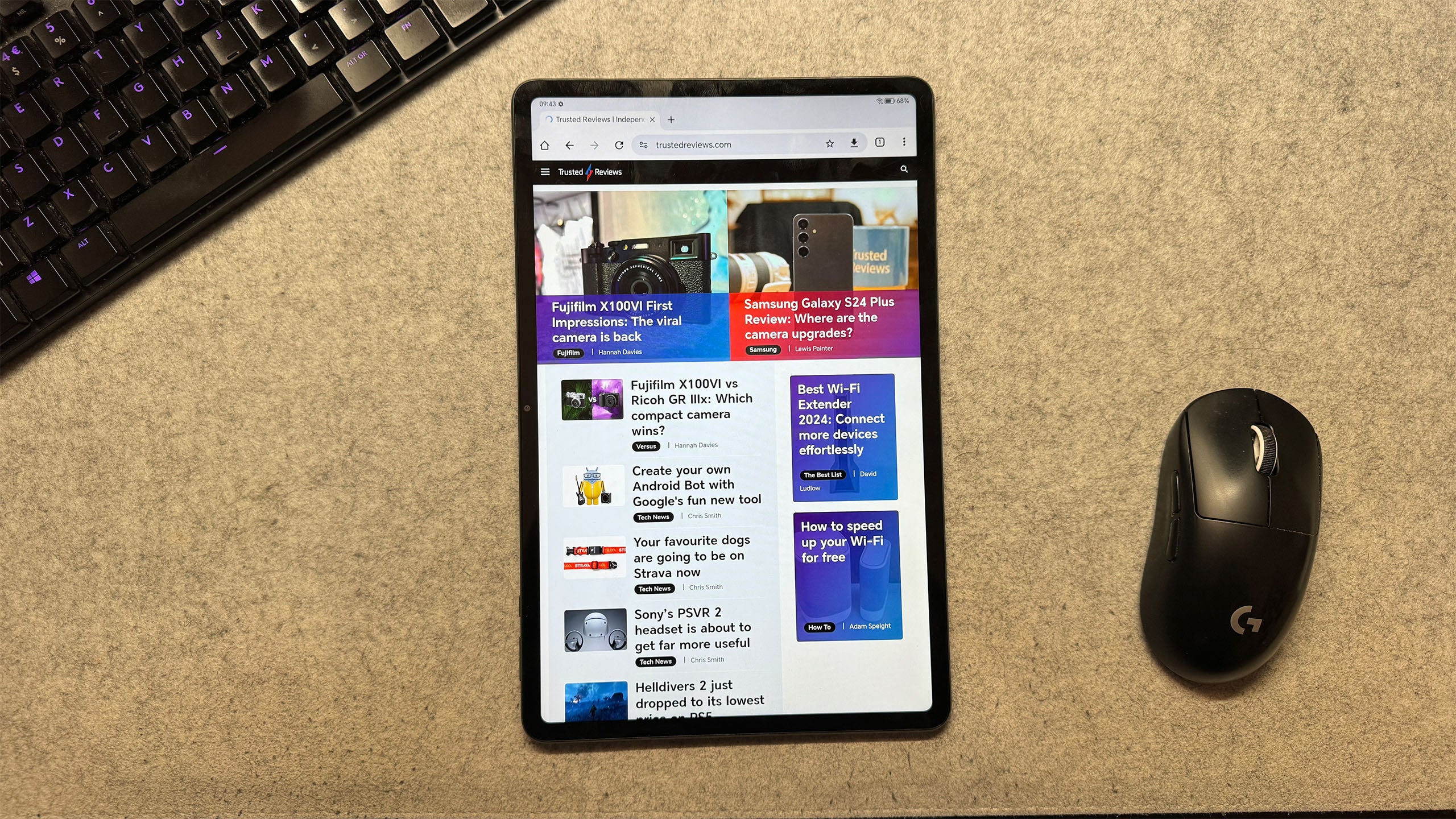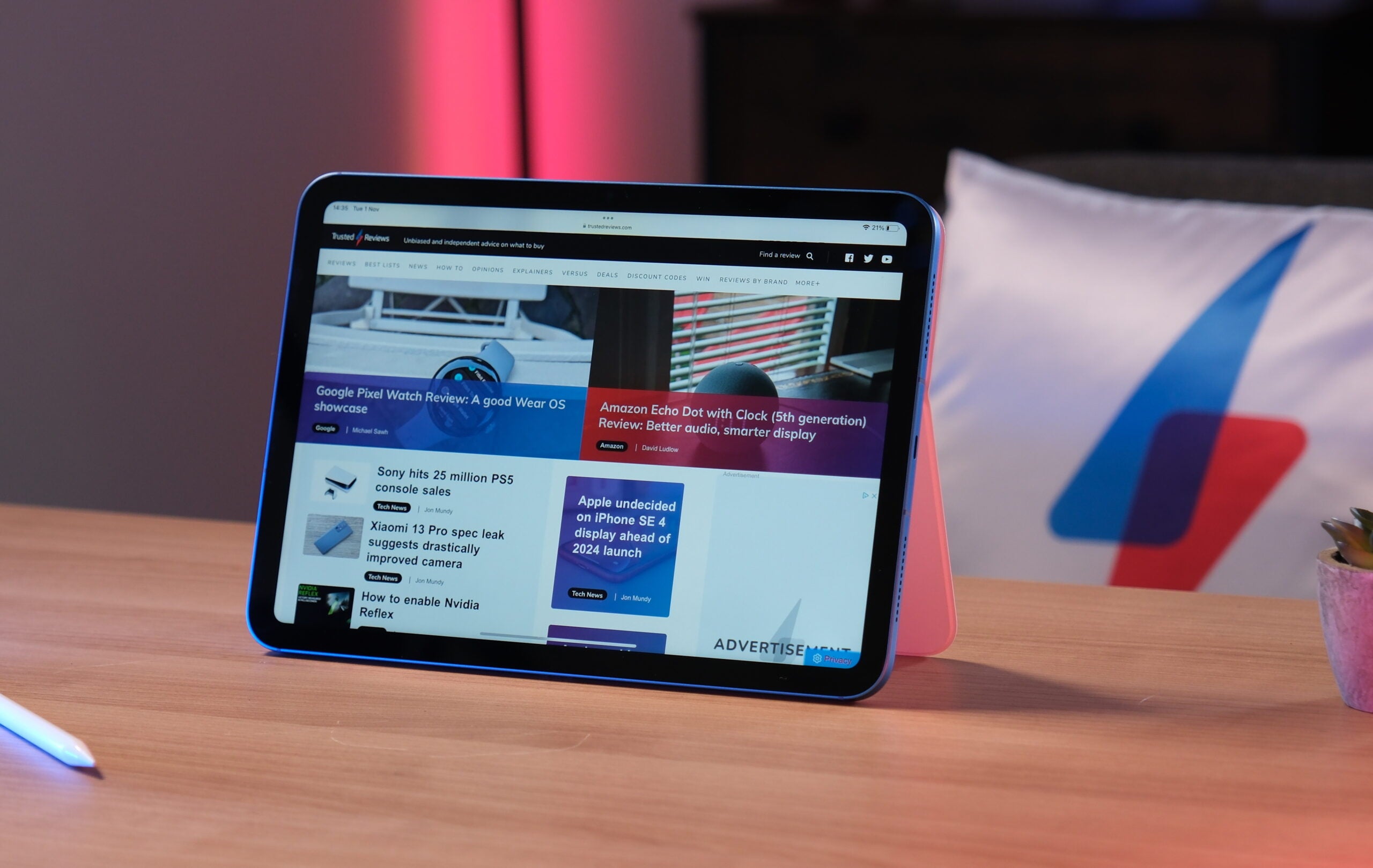Google Pixel Tablet Review
A servicable slab that doesn't really do enough to beat the iPad

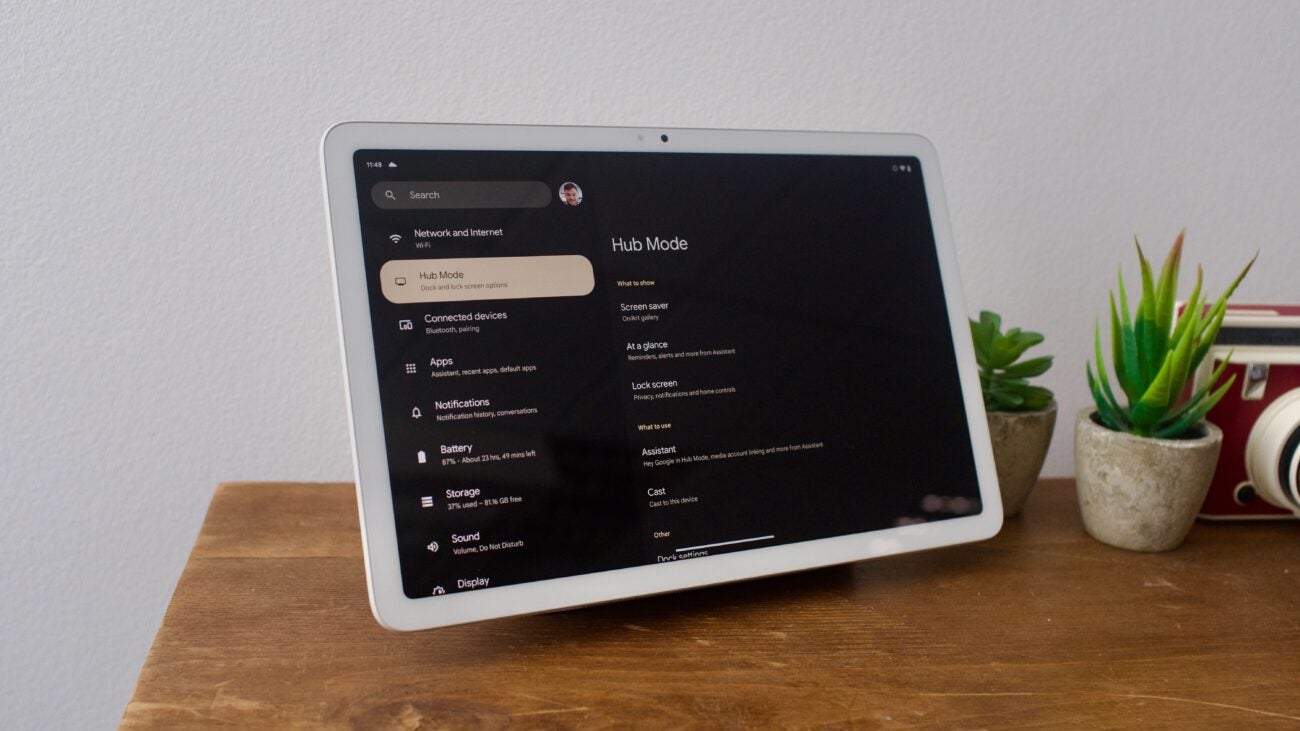






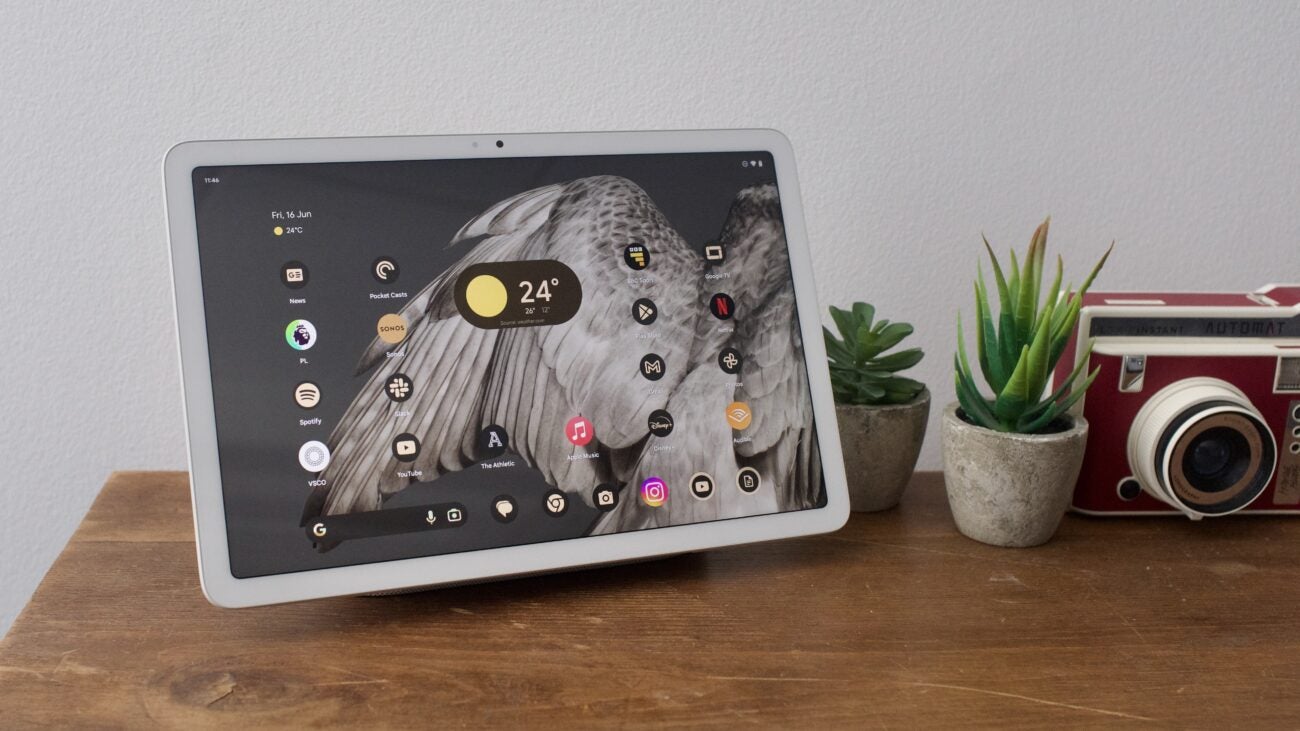

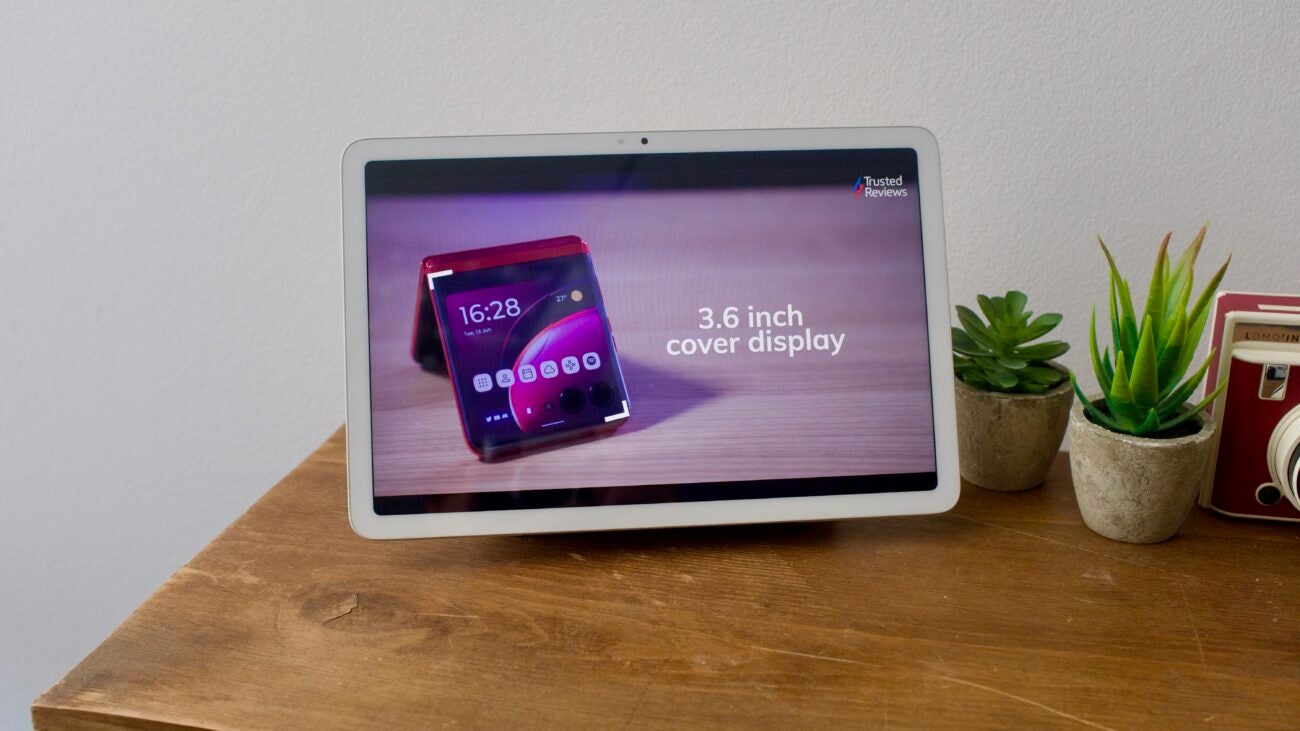

Verdict
The Google Pixel Tablet is a perfectly serviceable slab with one standout feature that turns it into a communal hub device. There’s plenty to like here, but odd pricing and some strange decisions stop it from being truly great.
Pros
- Sharp screen
- Dock is a handy charging accessory and a unique feature
- Far more affordable in the US
- Pixel UI works well on a tablet
Cons
- Dull design
- The speaker dock doesn’t sound great
- Screen only 60Hz
- Price is far too high in the UK
- Doesn’t have all the Nest Hub software features
Key Features
- Docking station includedWireless charging capable speaker standed comes in the box
- Google Tensor chipsetPowered by the same Tensor G2 chip as the Pixel 7 Pro
- Sharp displayHigh-resolution 10.9-inch LCD screen, 60Hz
Introduction
Google has aimed to do something worthwhile with its first Pixel Tablet by combining a standard Android slate with a dock that turns it into a smart home hub when not in use.
Trying to create of point of differentiation for a tablet has often been tricky, with many brands focussing either on cheap, content-consumption devices or pricier laptop replacements.
The Google Pixel Tablet instead is positioned as a sort of communal family device that, when not being used, sits on an included charging stand and morphs into something not dissimilar to the Nest Hub Max.
It’s a smart choice, especially with Google’s Assistant taking centre stage, yet there are still a lot of the age-old Android tablet issues here, not to mention the high UK price and the cheaper, arguably better-specced rivals like the OnePlus Pad.
Design and Screen
- Simple, clean design
- Soft plastic back
- One screen size option
After a number of fairly dull designs, Google really upped its game with the last two generations of Pixel phones. I’m not saying the Pixel 6 or Pixel 7 were the pinnacle of phone design, yet the tasteful multi-tone colour choices and eye-catching camera visor certainly helped them stand out.

It’s a little surprising then that the Pixel Tablet seems to completely shun any of these advances, going back to a far more basic overall look that’s mostly underwhelming. There are two colours (some regions have three) either with a white or black front. Both colours have a soft, almost eggshell-like finish on the back.
There’s a USB-C port for charging on the vertical side, a fingerprint-enabled power button, volume rocker and some plastic feet that help the tablet from scraping surfaces when placed on its charging stand. A small cutout for the single rear camera and a set of charging pins are the only things to adorn the back.
It’s a really simple design and it looks perfectly adequate. The soft-feeling rounded back and sides make it nice to hold and at 493g (slightly less than the OnePlus Pad, slightly more than the iPad 10) it’s light and comfortable.
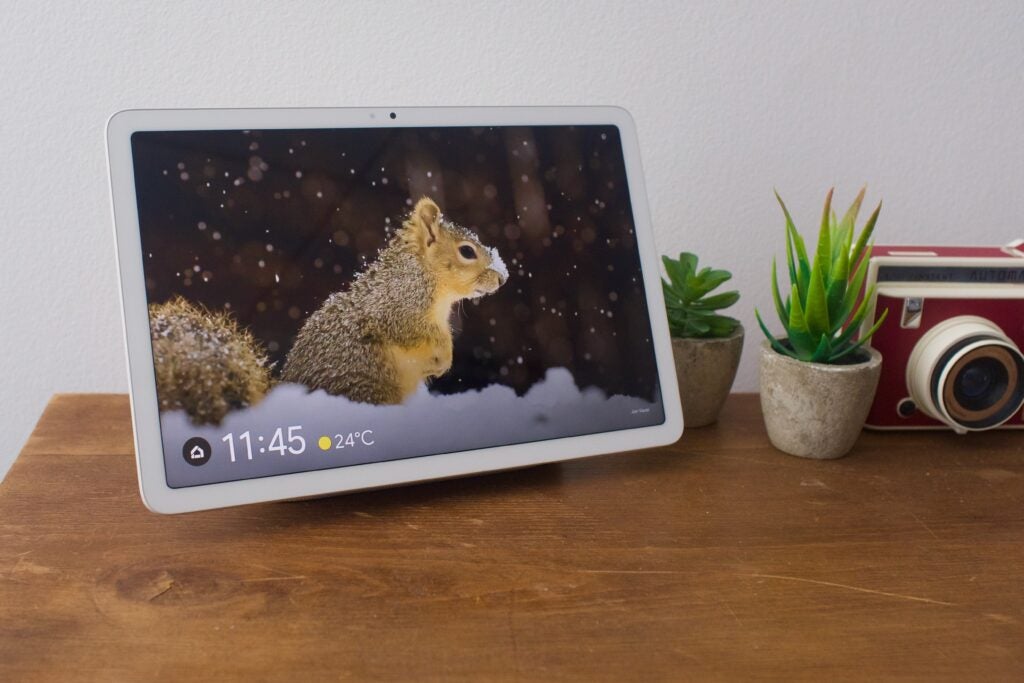
The screen is more of the same. It’s good – but nothing you won’t find elsewhere at this price range.
The highlight of the 10.95-inch panel is the sharp 2560 x 1600 resolution, which renders photos, videos and text very crisply. It’s a decent LCD with good colour reproduction, but it’s certainly lacking in some of the more high-end areas. The locked 60Hz refresh rate, for instance, gives it a juddery look when swiping that isn’t there on the 144Hz OnePlus Pad.
I also struggled with the display’s brightness. It’s fine when used inside, but on occasions I took it outside the overly reflective screen made it virtually impossible to use. Even when sat beside a window, the screen was often hard to see.
Speaker Dock
- Included with the Pixel Tablet
- Ok sound, but not that impressive
- Turns the tablet into the speaker dock and home hub
It’s a bold move including a charging speaker dock with every single version of the Pixel Tablet, but in reality, it’s the one addition that helps Google’s tablet offers something not found by the likes of Samsung, OnePlus and Apple.

The stand is a sturdy, fabric-covered block with a magnetic top that the tablet attaches satisfyingly to. Once attached, the tablet starts charging and any audio played is routed through the built-in speakers, rather than those on the tablet itself.
Once it’s all set up, the tablet also goes into what Google calls Hub Mode whenever it’s docked. This is a slimmed-down version of the UI found on the Nest Hub and Hub Max, giving you quick access to some smart home controls, the Google Assistant and various screensavers.
For instance, it can scroll through your Google Photos library – turning the whole thing into a constantly updating digital photo frame. It can also show the weather, selected artworks, photos others have shot on Pixel or just a big clock. If you’ve ever used, or even seen, one of the Nest Hub devices this will all be very familiar.
As someone who uses a Nest Hub Max and Nest Hub on a daily basis, the UI here isn’t quite as feature-rich. The Home integrations aren’t as straightforward and you’re often pushed out into the main Android interface. There are missing features too, like the handy way the Nest Hub Max can recognise different users by their faces.
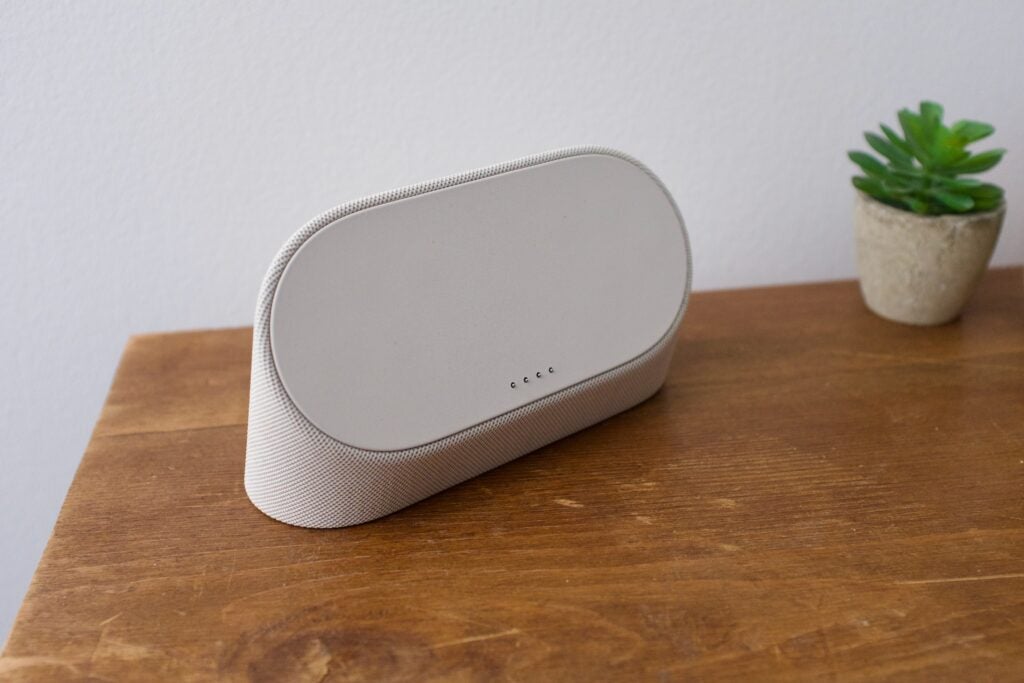
Cast music over to the device and you will get some nice custom interfaces: in Spotify for example, album artwork is enlarged and the UI is simpler and easier to navigate without picking the tablet up.
This would be a good smart home speaker however the audio quality is far from the best around. When I first started playing songs in the Trusted Reviews office, a few people thought the connection hadn’t been properly established and the audio was still coming from the tablet itself – it wasn’t.
There’s a real lack of bass here, with particularly instrument-heavy songs struggling. The start of Brianstorm by Arctic Monkeys sounded muddy, heavily distorted and not at all pleasing. It does a better job with lighter pop – Dua Lipa’s Dance The Night had more detail and the vocals were crisp and clear. I’d put the sound quality on par with a cheaper Echo device and below the Nest Audio.
For basic audio needs, like streaming radio, podcasts, audiobooks and listening to Assistant replies the speaker is more than adequate and has far more detail in voices than audio from the tablet itself.
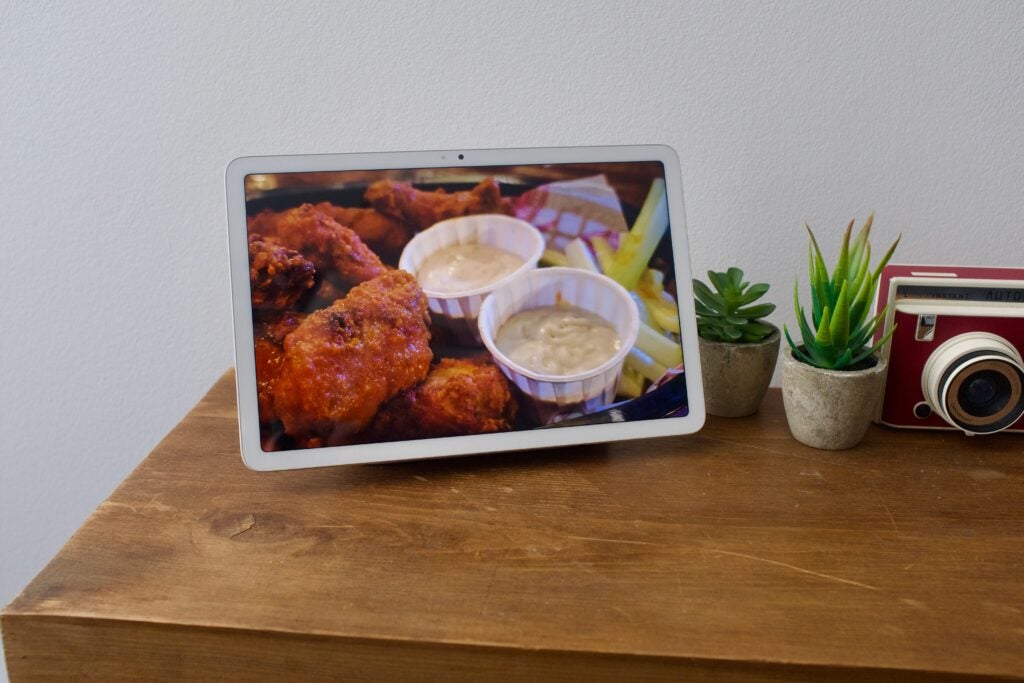
Performance and Software
- Tensor G2 chip is capable but does not standout anymore
- 8GB memory and either 128GB or 256GB storage
- Five years of Pixel security updates
Like all of Google’s current crop of devices, the Pixel Tablet is powered by the Tensor G2 chipset. You’ll find this chipset in everything from the budget Pixel 7a to the near $2000/£2000 Pixel Fold. There’s also 8GB RAM and either 128GB or 256GB of storage. As usual with Pixel products, there’s no expandable storage.
While I might be a little disappointed in my foldable phone having older internals, in a tablet designed primarily for home use the Tensor G2 is more than capable. In our synthetic benchmarks, the Pixel Tablet performs on par with the OnePlus Pad in most tests, however the Dimensity 9000-powered slate has a little more multi-core grunt. Still, there’s enough power here for everyday tasks. You can see a selection of benchmark scores below.
Like the OnePlus Pad, I found most games – including Stardew Valley and Call of Duty Mobile – played well, with the tablet keeping completely cool throughout. There wasn’t even any heat coming from the divide after a tough 30-minute benchmark. Pair up a Bluetooth controller and widescreen makes this a great choice for game streaming.
There are two speakers on each short end of the Pixel Tablet and they sound good if a little quiet. There’s a decent stereo feel when you’re watching movies and the 16:10 aspect ratio makes for an immersive content-watching experience. Other specs include Bluetooth 5.2 and Wi-Fi 6.
There’s much less a camera focus here than on Pixel phones, with an average 8MP fixed-focus sensor on both the back and front. The front camera is good for video calls, while the rear one is detailed enough for scanning documents. I found it slightly odd that Google bothered to include camera features like Night Sight and Top Shot here, as there’s not really any reason to use this tablet as an actual camera.
Android tablets have, in the past, always been criticised for their software – notably the lack of true tablet versions of popular phone apps. The iPad has long dominated this space and I can’t really see Android catching up anytime soon.
There are plenty of tablet-optimised apps here, though. Plenty of Google’s own apps have bespoke versions for the larger display, like Google News and Chrome, while third-party services like Disney Plus and Netflix feel at home on the bigger display. It’s more the powerful apps the iPad has you won’t find here, things like expanded versions of Lightroom, Photoshop and Procreate. There is the good LumaFusion video editing app, which is very welcome.
Google’s interpretation of the Pixel Launcher, built upon Android 13, is nice and one of the more fluid Android tablet UIs I have used. There’s a handy dock that appears when you swipe up from the bottom of the screen, giving you quick access to frequently used apps. You can then hold down an app icon and drag it into the main display for quick multitasking. You can have two apps open side-by-side, with a floating video window as a third.
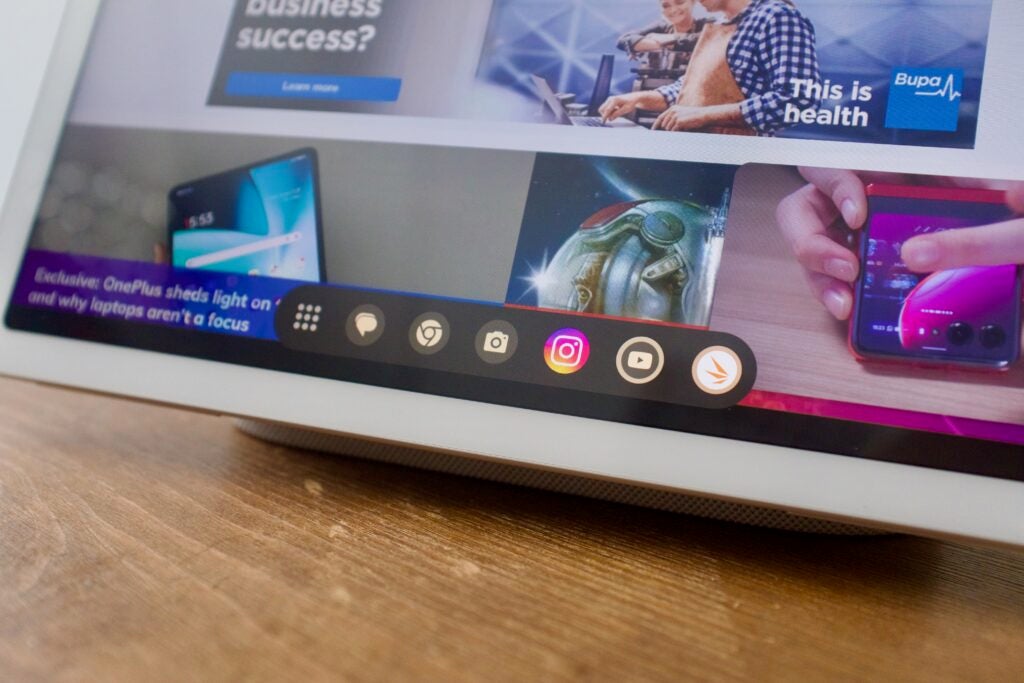
There’s a lot more Google could have done with the software, but I get the impressions it preferred to keep things simple and focus on the users it thinks would buy this tablet. For instance, there’s no desktop-like UI akin to Dex on Samsung tablets and Stage Manager on iPadOS, but then this isn’t a tablet for productivity and it’s not trying to ape a laptop, The complete lack of keyboard cases and pen accessories make this point abundantly clear.
In terms of software updates, Google has said the Pixel Tablet will be supported with five years of security updates.
Battery Life
- No USB-C cable or plug included
- Charges via the included speaker dock
There is no standard charger included with the Pixel Tablet and unless you provide your own USB-C cable and plug the only way to juice it up is with the speaker dock.
This is an interesting move, and considering the price it would have been nice to get at least get a USB-C to USB-C cable in the box. That being said, throughout my week with the Pixel Tablet I haven’t used cabled charging (aside from for some tests) as whenever I am done using it I just attach it back on the dock and it charges back up.
The tablet won’t be sold without the dock, but Google has said additional docks will be available – so one could be placed in the lounge, and another in the bedroom.
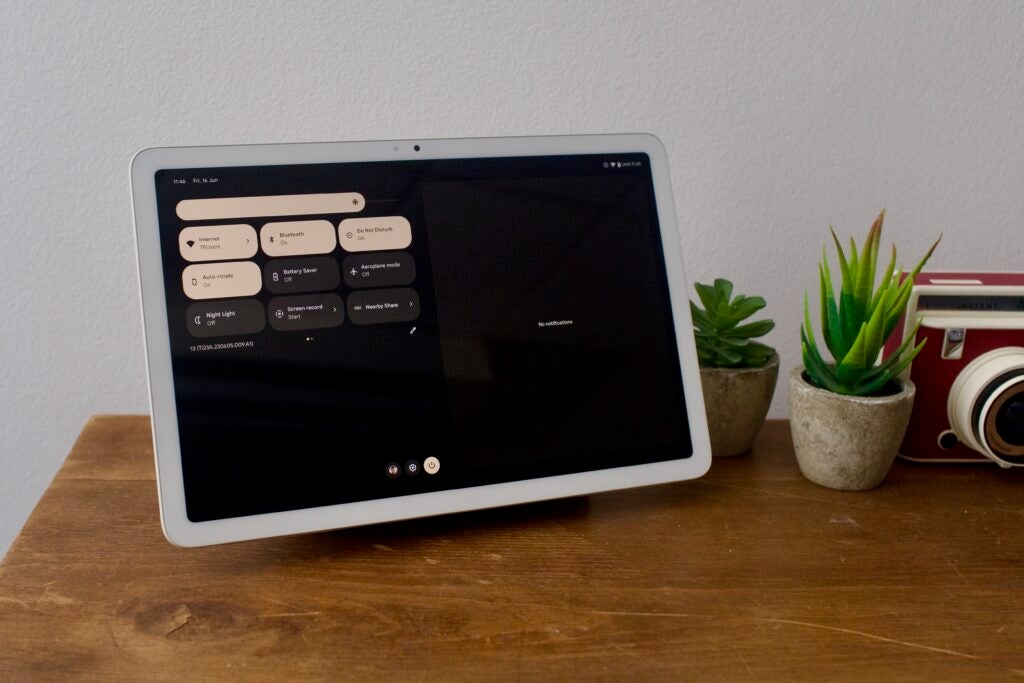
Battery life itself has been about what I would expect from an 11-inch tablet – that means it’ll last a few days of multi-hour use before needing a charge and it’ll only lose a bit of power each day if it’s left untouched in a bag.
An hour of Netflix streaming took 14% off the battery, which is more than I would expect, but I did find myself upping the brightness more than usual to be able to comfortably watch. 30 minutes of light gaming took off 7%, more on par with the effort from OnePlus.
Charging via the 15W dock can be slow – multiple hours are required for a full charge – but then it’s more of a place the tablet will sit for extended periods and just charge. Google has also added an option to limit charging, so having it plugged in all the time shouldn’t harm the battery over an extended period.
Cabled remains the fastest way to charge, but if you’re familiar with Google’s phones then you’ll know fast charging isn’t one of its specialities. As no charger was included, I used one designed for the Pixel phones and it took 160 minutes for a full charge. A 30 minute charge only took the battery up by 22%, which is slow.
As a comparison, the OnePlus Pad can get to 55% in the same amount of time and a full charge takes just over an hour.
Latest deals
Should you buy it?
You’re after a communal tablet for home use:
Attach the Pixel Tablet to the included dock and it turns into a digital photo frame, a smart home hub and a speaker. The support for multiple users also makes this a great family tablet to leave docked in the lounge. The iPad feels like a much more singular device.
You want a laptop replacement:
Unlike some tablets from Apple, Samsung and even OnePlus, this isn’t really a productivity tablet. Google isn’t selling a keyboard case or a stylus and it’s far more of media tablet.
Final Thoughts
The Pixel Tablet is a solid if slightly underwhelming Google slate. The ‘hub’ functionality and included charging dock help it stand out from the crowd and offer a unique reason for its existence, but beyond that, it doesn’t do much to propel Android tablets forward in any meaningful way.
It’s a good content-consumption device with a sharp display and nice software. It pairs well with Google’s other products, like the Pixel Buds, and is visually appealing in a basic sort of way.
Yet, the competition is tough. If it’s just media watching you’re after, something like the £249.99/$279.99 Amazon Fire Max 11 offers good specs and is far cheaper. Samsung’s Tab S8 series is pricier but has the tools to offer more productivity skills and the OnePlus Pad is not only cheaper but supports various accessories and has a much nicer 144Hz display.
The odd US-to-UK price differentiation also makes it hard to recommend this over an iPad if you’re in the UK. In the US, the Pixel Tablet’s $499 price puts it up against the iPad 10, however in the UK it is £100 pricier than the same device. With that £100 leftover, you could easily pick up a speaker that sounds better than the charging dock.
As we’ve seen with the Pixel phones in the past, improvements come thick and fast once Google gets going and I already have hope a Pixel Tablet 2 would fix many of the issues I have here – hopefully, it arrives soon.
How we test
Unlike other sites, we thoroughly test every product we review. We use industry-standard tests in order to compare features properly. We’ll always tell you what we find. We never, ever accept money to review a product. Tell us what you think – Send your emails to the Editor.
Used as a main device for a week
Reviewed alongside official speaker stand
Benchmarked with industry-standard tools
FAQs
Yes, currently there is no way to buy the tablet without the dock. However you can buy extra docks.
Google states there is support for five years of security updates.

